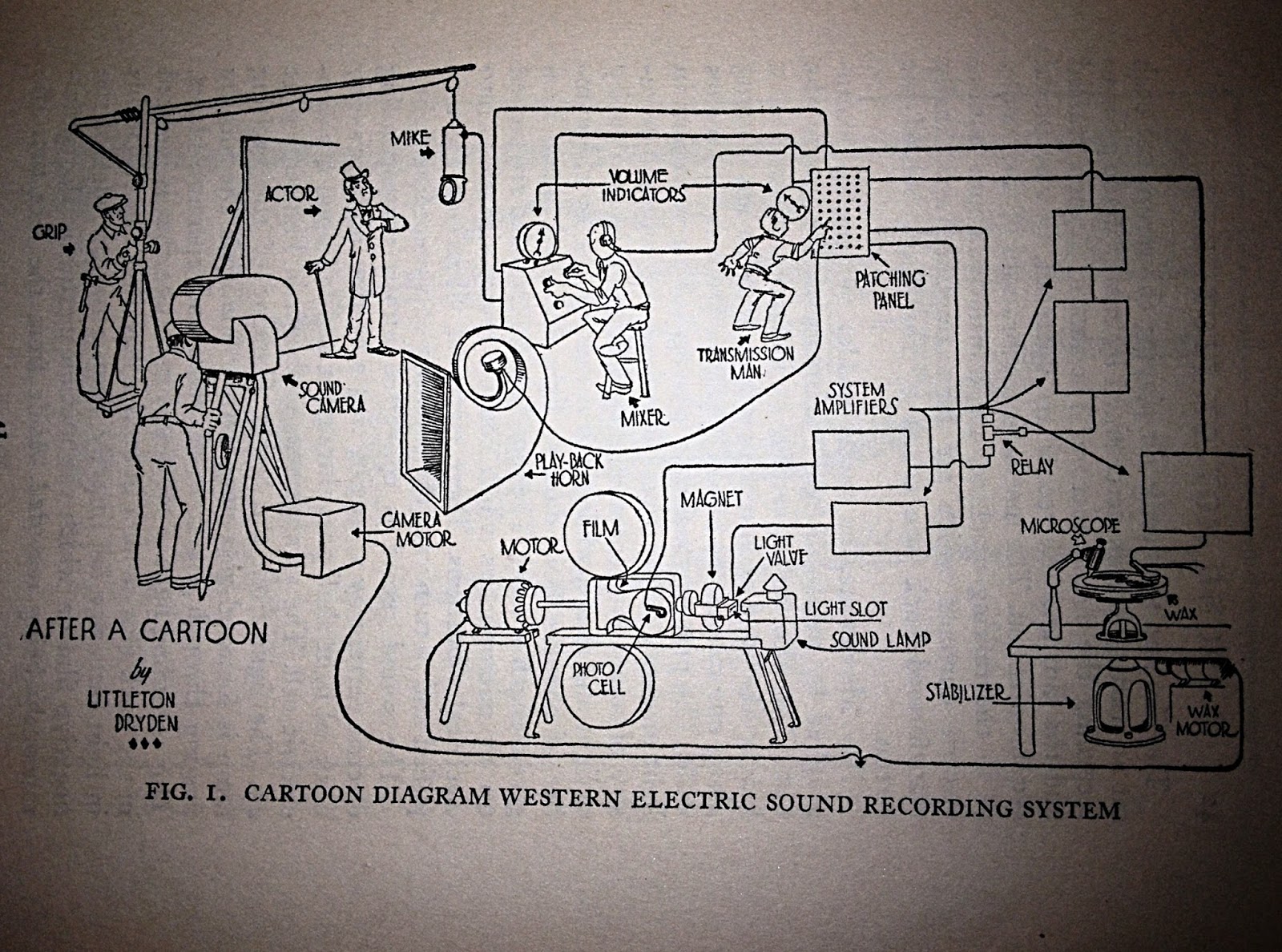Having decided to highlight the MoC library in my blogs the next thing I had to do was start...somewhere. What you see here is just the tip of the iceberg- I'm going to have to measure the shelf space next time I'm down!
 |
In the end though the choice was fairly easy as the first book I spotted on shelf 1/4 was this:
 |
| Inside cover of Sound Motion Pictures |
Along with books my main passion is cinema (I studied English and Film) so this was a no-brainer. Published in 1929 Harold B Franklin's Sound Motion Pictures must have been one of, if not the first book on sound in cinema and it's a curious mix of film theory, cinema history, the science of acoustics and speculation on the future of 'talkies'. In fact it's a little difficult to identify just who this book was aimed at, but here's the opening paragraph of the foreword:
"The aim of this book is to present a condensed record of the progress of "sound" in motion pictures. In attempting to write the history of the new device, the author of course realises fully that it is as yet too early to base judgement on a perspective that can come only with time and experience. Yet because an entire industry is adjusting itself overnight to a new condition, the very interest in the subject would appear to justify this text."
Obviously of interest to film scholars, and undoubtedly un-put-downable for budding sound engineers, but out-with these particular demographics it's hard to imagine this on anyone's coffee table.
Franklin though was well aware of that his "pioneer volume" had a broad scope yet a fairly specific readership as he acknowledged "these pages will serve almost every one interested in the subject at least to some degree. It is therefore only natural that some portion of the text, introduced with a special public in mind, will be of less interest to some other reader of a different need."
This then was clearly meant to be used more of a reference book and must surely have found a readership among film companies and cinemas alike: there are several detailed explanations and diagrams indicating the optimum positions for speakers in relation to audiences as well as some in-depth descriptions of the change in studio dynamics in order to accommodate sound recording.
As well as the way in which this book flits between some very complex science then some very accessible film facts and figures it's the volume's own place in cinema history which makes it unique. Sound Motion Pictures was written as the biggest upheaval (both cultural and technological) in the history of motion pictures was unfolding. The adjustments actors, technical crew and audience alike had to make at this time have been well dramatised in films like Singin' in the Rain and The Artist but as they were made with the benefit of hindsight perhaps Sound Motion Pictures captures a more authentic sense of the excitement and uncertainty of the era.
The next blog will take a closer look at Franklin's take on the history of sound in the movies.


No comments:
Post a Comment